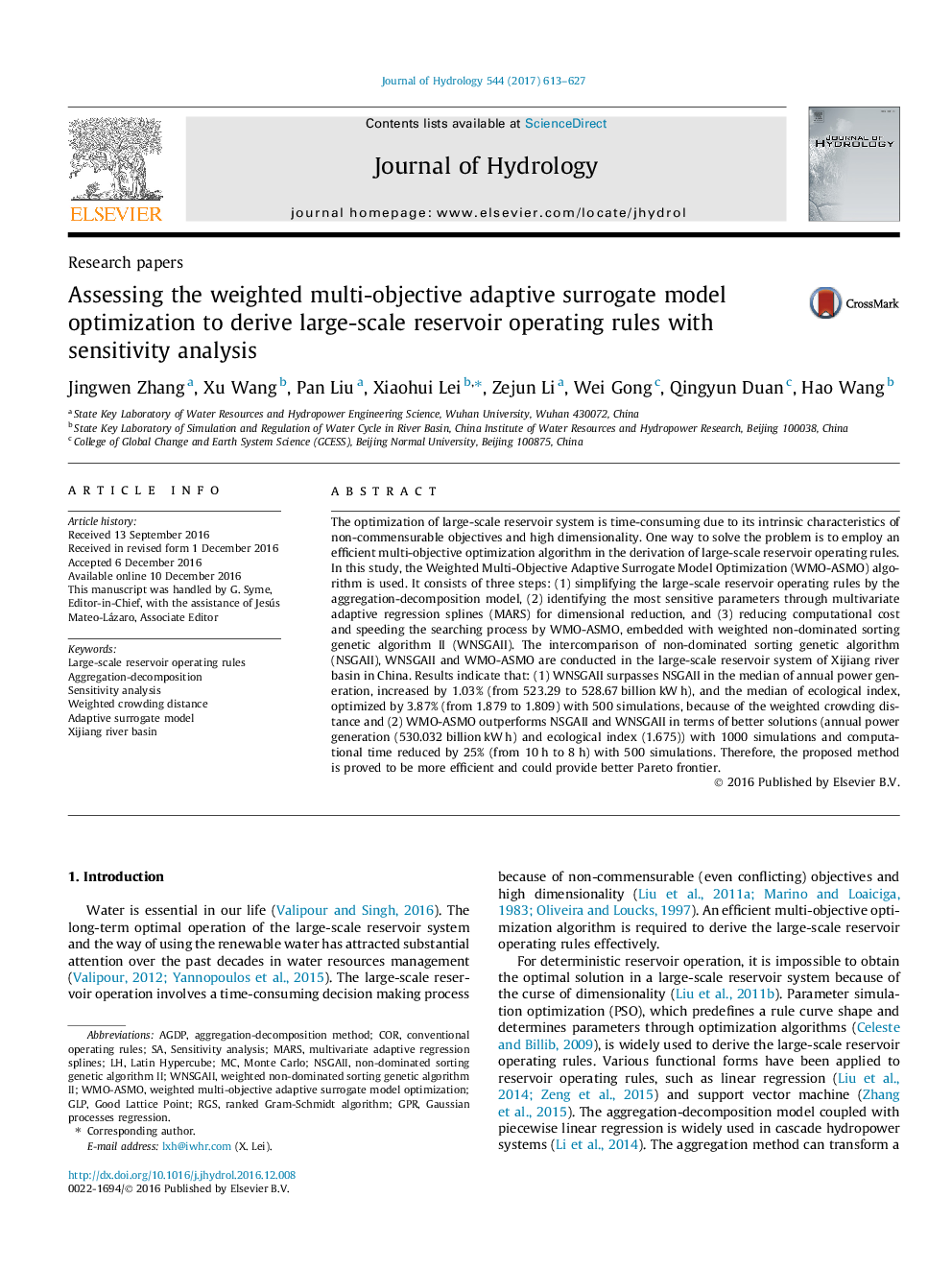| کد مقاله | کد نشریه | سال انتشار | مقاله انگلیسی | نسخه تمام متن |
|---|---|---|---|---|
| 5771372 | 1629910 | 2017 | 15 صفحه PDF | دانلود رایگان |
- Large-scale reservoir operating rules are derived by sensitive analysis and an adaptive surrogate model.
- Sensitivity analysis screens out the sensitive parameters of the large-scale reservoir operating rules.
- The weighted crowding distance of WNSGAII contributes to better performance than the classical NSGAII.
- WMO-ASMO outperforms NSGAII and WNSGAII with same original model runs.
The optimization of large-scale reservoir system is time-consuming due to its intrinsic characteristics of non-commensurable objectives and high dimensionality. One way to solve the problem is to employ an efficient multi-objective optimization algorithm in the derivation of large-scale reservoir operating rules. In this study, the Weighted Multi-Objective Adaptive Surrogate Model Optimization (WMO-ASMO) algorithm is used. It consists of three steps: (1) simplifying the large-scale reservoir operating rules by the aggregation-decomposition model, (2) identifying the most sensitive parameters through multivariate adaptive regression splines (MARS) for dimensional reduction, and (3) reducing computational cost and speeding the searching process by WMO-ASMO, embedded with weighted non-dominated sorting genetic algorithm II (WNSGAII). The intercomparison of non-dominated sorting genetic algorithm (NSGAII), WNSGAII and WMO-ASMO are conducted in the large-scale reservoir system of Xijiang river basin in China. Results indicate that: (1) WNSGAII surpasses NSGAII in the median of annual power generation, increased by 1.03% (from 523.29 to 528.67 billion kW h), and the median of ecological index, optimized by 3.87% (from 1.879 to 1.809) with 500 simulations, because of the weighted crowding distance and (2) WMO-ASMO outperforms NSGAII and WNSGAII in terms of better solutions (annual power generation (530.032 billion kW h) and ecological index (1.675)) with 1000 simulations and computational time reduced by 25% (from 10 h to 8 h) with 500 simulations. Therefore, the proposed method is proved to be more efficient and could provide better Pareto frontier.
Journal: Journal of Hydrology - Volume 544, January 2017, Pages 613-627
